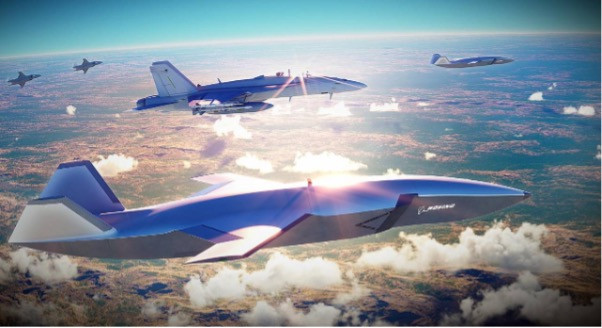Since the early 2000s, the Collaborative Combat Aircraft (CCA) program has been a focal point for the US Air Force. These CCAs are designed to operate in conjunction with the next generation of manned combat aircraft, leveraging artificial intelligence (AI) technology.
The primary objective of this program is to enhance the existing fighter and bomber fleets by integrating cost-effective AI-driven unmanned aircraft. The recent advancements and effectiveness of unmanned aerial vehicles (UAVs) as force multipliers in Ukraine have propelled this program forward.
Over the upcoming five years, the US Air Force plans to manufacture approximately one thousand autonomous warrior aircraft equipped with AI capabilities, as reported by the Wall Street Journal. These autonomous aircraft will predominantly function as “wingmen” alongside manned combat aircraft, particularly the fifth-generation F-35 fighters.
These jet-powered autonomous systems will possess the capability to engage both air and ground targets while executing various administrative duties typically performed by manned aircraft, such as surveillance operations. It is anticipated that these robotic aircraft will enable cost savings by allowing for the deployment of more aircraft at a reduced cost, considering the escalating expenses associated with advanced manned aircraft. According to the Pentagon, the most sophisticated drone is projected to cost around one-third of a comparable fighter jet, with additional savings expected in pilot training expenditures.
However, the initial phase of the program is estimated to incur costs of approximately $6 billion. Key contenders for Defense Department contracts include Anduril Industries’ “Fury,” Boeing’s “MQ-28A Ghost Bat,” developed in collaboration with the Australian Air Force, and General Atomics’ “Gambit,” all of which have already produced prototypes of their proposed autonomous aircraft.
The Magura-V5 Sea Drone: The Crimes of Russia’s Black Sea Activities
The development of the water-based helicopter exemplifies innovative thinking under the leadership of Kyrylo Budanov in Ukraine’s military intelligence agency.
While Northrop Grumman and other major competitors have not disclosed their aircraft designs, Northrop Grumman has been actively involved in AI integration within the US Army’s Future Tactical Unmanned Aircraft System (FTUAS) program. Conversely, Lockheed Martin has been focusing on human-machine collaboration technology through Project Carrera.
The US Air Force’s shift towards autonomous combat aircraft signifies a significant evolution in military strategy, blending technical progress with the operational flexibility that drones have showcased in conflicts like those in Ukraine. Successful implementation of CCAs could revolutionize aerial warfare, enhancing operational efficiency and lethality.
Key operational and logistical considerations for the Air Force include payload capacity, runway requirements during peace and wartime, infrastructure for fixed and wireless operations, aerial refueling capabilities, and other relevant aspects.
Addressing the potential force structure is another critical aspect that requires attention. Thomas Lawhead, US Air Force associate deputy chief of staff for strategy, integration, and requirements, poses the question, “What will the future warrior regiment resemble?” He emphasizes the importance of developing tactics, techniques, and procedures within experimental operations units to optimize the organization, training, and equipping of squadrons efficiently and effectively.
US Air Force Secretary Frank Kendall underscores the transformative nature of these robotic systems, stating that they are not merely technological advancements but essential assets that can potentially save lives, ushering in a new era where unmanned fighters play a crucial role in mission success and personnel protection.










